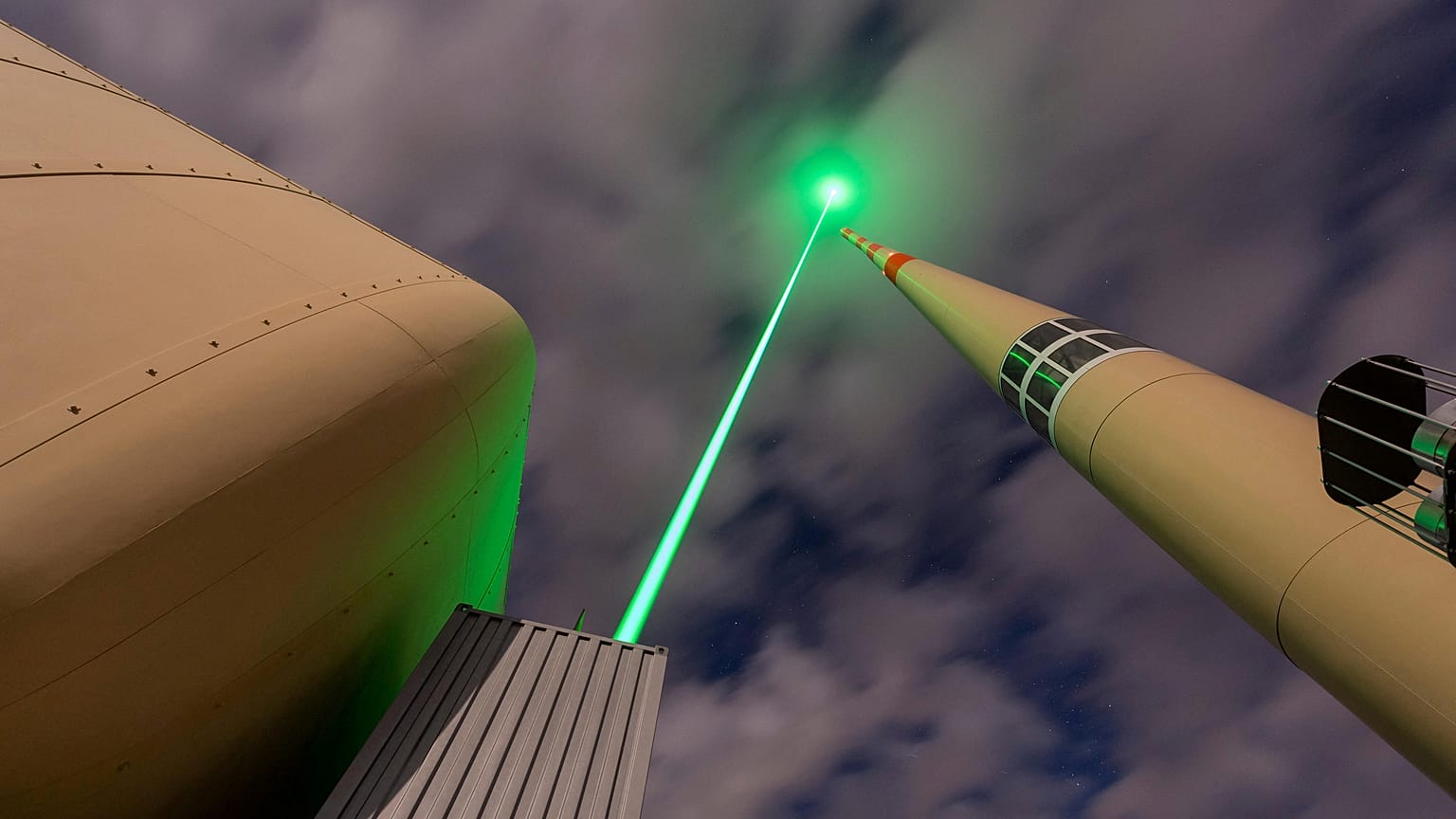Laser technology could help protect large areas like airports and rocket launch pads from the devastating power of lightning.
In the very first real-world experiment of its kind, scientists have managed to control the path of lightning in the sky, thanks to a rapidly firing laser that could be used to protect infrastructure from being damaged in a thunderstorm.
The experiment was run in 2021 by a group of about 25 researchers at the Laser Lightning Rod (LLR) project, a European-based initiative which was launched with the aim of developing a laser system to control lightning.
In an abstract from 2021 describing the project, the scientists said a sufficiently intense laser beam should work just like a metal wire, forcing the lightning to travel down its path.
To prove this theory, they created a €2 million high-power laser able to fire 1,000 high-energy pulses per second, which they then trialled next to the Säntis telecommunications tower in the Swiss Alps. The tower is estimated to be hit by lightning around 100 times a year.
There, over 10 weeks of observation and over six hours of thunderstorms between July and September 2021, the tower was hit by at least 16 lightning flashes, with four bolts striking while the laser was active.
In one case recorded by high-speed cameras thanks to the clear-sky conditions, a lightning strike followed the exact straight line of the laser beam for about 50 metres, showing that the technology worked just as expected.
In the case of the three bolts that cameras could not capture due to cloudy weather, researchers looked at the radio waves shed by the lightning and found that the strikes had again followed the path created by the laser.
The results of the mountaintop experiment were published in Nature Photonics this week.
Hi-tech lightning rod
Scientists have been trying to harness the power of lightning for more than 20 years, but it’s the first time that lasers have proven effective in wrangling the electric charge of lightning in a real-world scenario.
The most common anti-lightning technology currently used across the world is the lightning rod, a metres-long metal pole rooted in the ground.
Because of their limited height, metal rods cannot be used to protect large areas such as airports and launch pads for rockets.
A rapid-fire laser beam like the one used in the Swiss Alps experiment, on the other hand, would be able to cover these larger areas and infrastructure, intercepting lightning high in the sky.
By blasting intense bursts of infrared light in the sky at 1,000 times per second, the LLR project’s laser creates a path of least resistance for lightning, ripping electrons off air molecules and forming a channel of low-density, ionised air.
While the main goal of the research is to one day use this technology to better protect us and our infrastructure from lightning, the high costs of the laser beam produced by the LLR project make this unlikely to happen in the immediate future.
Lead researcher Aurélien Houard, a physicist at the Laboratory of Applied Optics in Paris, told Nature that the fact that the project’s laser is, so far, one of a kind means it will take time to make the technology cheaper and more practical.



















